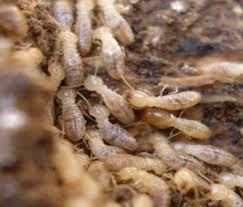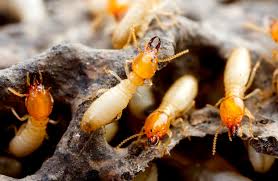8 Easy Facts About Termite Control Review Explained
This webpage describes the three types of subterranean termite, drywood and dampwood.
Termites are classified into three categories depending on their nesting and feeding habits: subterranean, drywood and dampwood.
Subterranean termites are the most common kind of termite that are among the most destructive pests and infests timber in buildings. Outdoors they infest wood that is dead in contact with the dirt, such as trees, stumps and fallen branches. They prefer wood which has some amount of rot already, which makes it a lot easier for them to digest it, although they can digest sound wood. .
Unknown Facts About Termite Control Specialists
Subterranean termites will need to be near a source of moisture to survive, making their nests in or close to where moisture can be easily acquired by them from the soil. They tunnel through dirt to access moist soil or timber and in seasons that they float into the ground to achieve moisture. .
The termites use soil for a substance to construct nests and shelter tubes, which are made up of wood soil, faeces and saliva. Some species construct carton nests above ground and construct shelter tubes (also referred to as sand tubes) to link the nest to the ground.
Foraging is determined by the weather, with high activity in summer and minimal activity in dry conditions or winter after rain. In tropical areas they can forage throughout the year, with peaks during warmer conditions.
More About Termite Control Specialists
Termites live inside parts of timber, wholly in small colonies less than 1000 people. There might be tiny colonies such as a piece of furniture inside one piece of wood or item. They could feed across rings so the galleries do not follow the grain of timber as is subterranean termites, however they tend to steer clear of heartwood. see page

Colonies can grow for years undetected until the termites swarm or the timber breaks. The winged alates, which would be the sole casts that leave the nest, may not be produced for years in a colony before the population reaches a critical point. They leave the nest find a website to mate and start a new colony, generally not far from the parent colony and to pair up. .
Dampwood termites normally infest decayed wood that stays moist because of contact with the soil or through a water leak in a construction. They are likely to infest timber that is outside, like a tree, stump or logs in contact with the soil.

Not known Facts About Termite Control Review
Termites live completely they feed and make galleries that are open. As with termites, they can infest timber for many years before they are found, which is likely when the alates swarm from a mature colony. Swarming may occur over a few months, with different species swarming at times.
They are a sign of a click to investigate moisture issue if they are observed in a building. They are minor pests and can be controlled in buildings by taking away the supply of moisture. In trees that are live they have a tendency to feed on wood that is dead and rotting.
Termite species can be tricky to identify, look at this website even to the specialists. Identification is based on the soldiers, that's the caste that has the most distinguishable features.
Of the pest species it is the Coptotermes species that are public enemy number 1 in Australia.
The 5-Minute Rule for Termite Control Services In Adelaide
The soldier's mind is and yellowish with darker, smooth thin mandibles. Body is up to 7 mm long. It's easily confused with two other native Coptotermes species, C. frenchi and C. lacteus (Victoria Museum)
The soldiers generate a white sticky liquid out of an opening (fontanelle) on front of head when defending the nest from attack.
Coptotermes species do not construct mounds, but in Queensland and other areas of Australia. They largely nests in trees, poles, stumps, buried timber spaces, around homes under buildings and in walls. Favoured trees for nesting are various eucalypts, oaks and peppercorns. The colony is located in the portion of the trunk or the root crown.
The Only Guide for Termite Control Specialists
Though Mastotermes darwiniensis is the destructive locally across its limited range in tropical Australia, coptotermes acinaciformis is the termite species in Australia overall. C. acinaciformis attacks all lumber structures and damages forest and ornamental trees in addition to fruit trees.